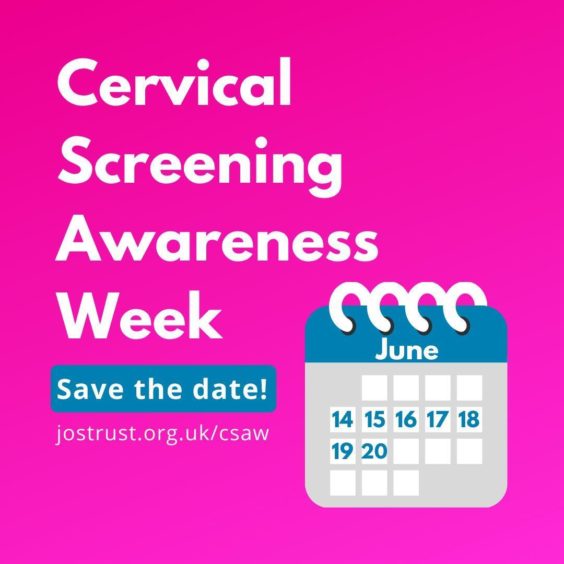A cancer charity has warned misconceptions around HPV are leaving women “confused, ashamed and terrified” after their smear tests.
According to Jo’s Cervical Cancer Trust, many people believe it’s an STI, which in some cases has even led to the breakdown of relationships and accusations of infidelity.
New research by the charity has found only half of those who have HPV (Human Papillomavirus) on their cervical screening results know what it really is – a common virus.
The charity said the number of people coming forward for HPV help has doubled in the last few years.
This comes after HPV primary screening was recently introduced in Scotland.
Catching cervical cancer earlier
Cervical cancer is rare with 3,200 diagnoses every year while HPV, the cause of the disease, is extremely common affecting 8 in 10 in their lifetime.
The body will normally clear the infection without it doing harm, however, lack of awareness of the virus means almost everyone who is told they have HPV fears that they have cancer (more than 8 in 10).
The charity surveyed members of its UK-wide community who have had HPV and found high numbers reported feeling anxious (more than 7 in 10) and ashamed (more than 4 in 10).

Cervical screening in Scotland uses HPV primary screening which is a more sensitive and effective test than the previous testing method of looking for cell changes.
It helps find those at higher risk of cervical cancer earlier. It also means that it is now safe to have cervical screening less often.
However, as a result of this change, more women and people with a cervix are learning they have the virus.
The new method was introduced in March 2020, and with it, the intervals between smear tests have increased to five years.
The Covid-19 pandemic coinciding with the introduction of HPV primary screening presented a barrier to communicating these important changes.
Tackling HPV stigma
HPV has been the most popular topic on their expert clarification service for the last two years and the second most popular topic on their helpline.
Their services have also seen an increase in health anxiety relating to HPV.
Misconceptions around the nature of HPV, and its relation to sexually transmitted infections, can lead to concerns around promiscuity, infidelity and even relationship breakdown, which Jo’s Cervical Cancer Trust regularly hears of through its services.
Almost 4 in 10 reported being worried about telling their partner (38%) and almost 2 in 10 worried that a partner had cheated (17%). Half of those surveyed were worried about sex and intimacy after learning they have HPV.
There is no HPV test for men, meaning that the emotional strain of an HPV diagnosis can fall to women.
The charity wants to increase education about HPV from an earlier age to reduce the impact across the life course.
Cervical screening attendance remains vital
During Cervical Screening Awareness Week, the trust is encouraging conversation and sharing of experiences about the virus in order to reduce isolation and anxiety.
For those living with and beyond cervical cancer, the HPV diagnosis often prevails.
Sam Dixon, chief executive of Jo’s Cervical Cancer Trust, said: “Increasing cervical screening attendance remains vital, but we must not overlook the support that is often required after the test.
“HPV is so common and yet those affected tell us they often feel isolated.
“Increasing HPV understanding must go hand-in-hand with cervical screening awareness so that everyone understands their results, and this very normal thing becomes normalised.”
💬 “I always describe it as like the common cold that you get on your cervix; most of us are going to get it at some point" – @GynaeGeek
Get the facts about HPV during #CervicalScreeningAwarenessWeek 👉 https://t.co/vqe8PeQxWj
— Jo's Cervical Cancer Trust (@JoTrust) June 14, 2021
Cervical Screening Awareness Week runs until Sunday June 20.
